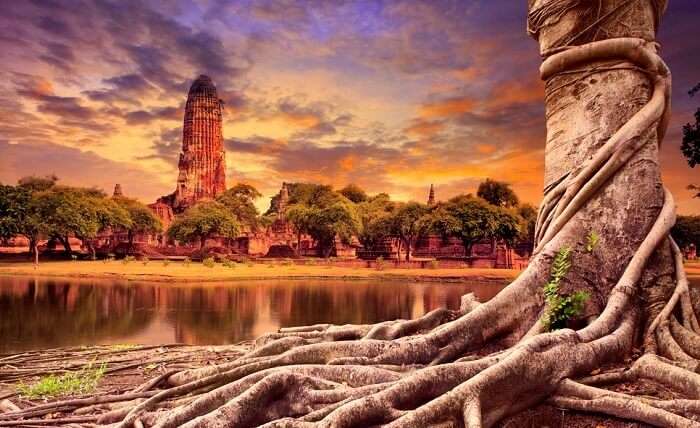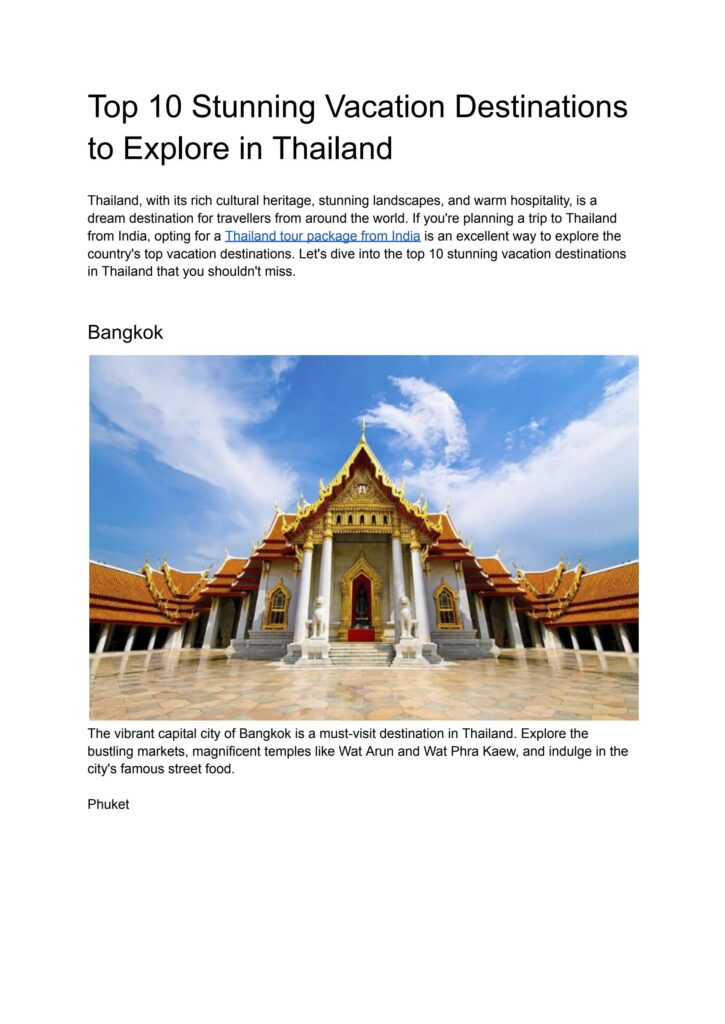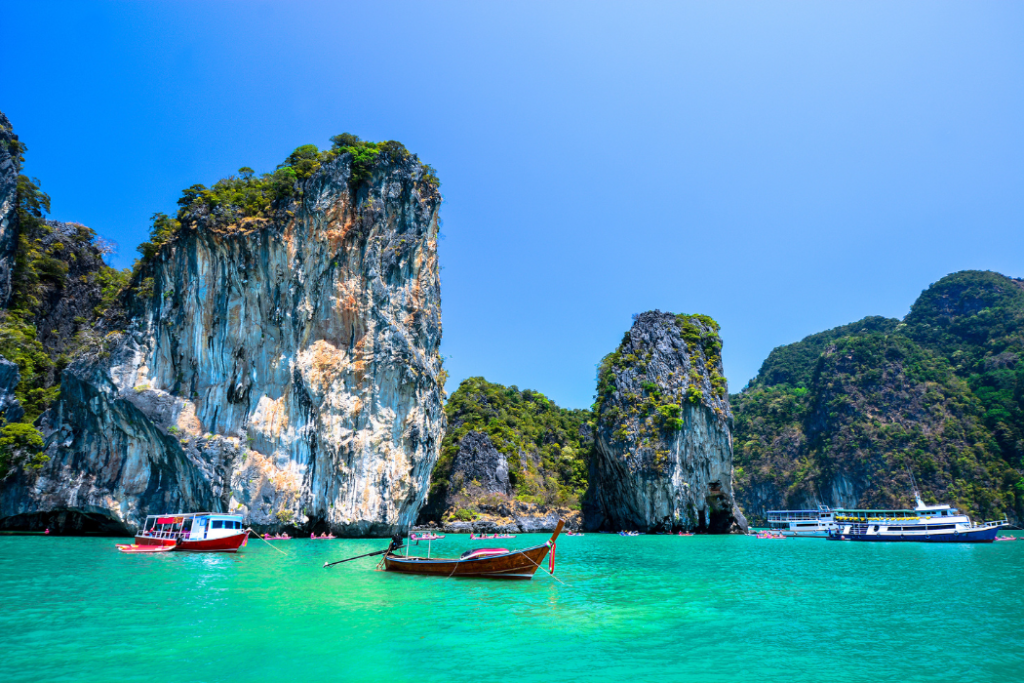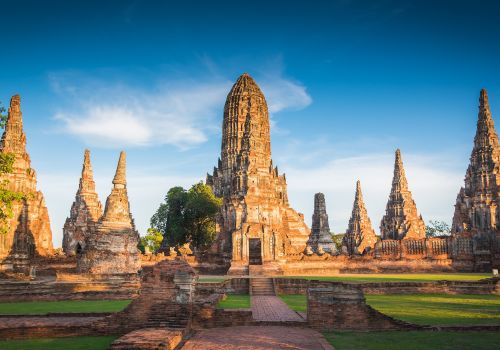Thailand, a land brimming with beauty and allure, is a country that invites you to delve into its vibrant cultural heritage. From the bustling cities to the serene beaches, Thailand offers a plethora of tourist attractions that captivate the heart and soul. But beyond the surface level, lies something even more profound – the intangible cultural heritage of Thailand. With a rich tapestry interwoven with traditions, rituals, and art forms, Thailand’s cultural heritage is a treasure waiting to be discovered, unveiling the essence of this enchanting nation. Join us as we embark on a journey to explore the depths of Thailand’s vibrant cultural heritage, immersing ourselves in its unique traditions and captivating history.
The Cultural Diversity of Thailand
Thailand, located in Southeast Asia, is known for its rich cultural heritage and diverse ethnic groups. The country is home to various indigenous communities, each with their own unique traditions, languages, and costumes. Thai culture is a colorful tapestry that has been shaped by centuries of history, religious practices, and interactions with neighboring countries. From the bustling cities to the tranquil countryside, you will find an abundance of cultural experiences waiting to be explored in Thailand.
Ethnic Groups in Thailand
Thailand is home to over 70 ethnic groups, each with their own distinct customs and traditions. The majority of the Thai population belongs to the Tai ethnic group, which includes the central Thai, northeastern Thai, and northern Thai. Other major ethnic groups include the Chinese, Malay, Karen, Lahu, Hmong, and Akha. These vibrant communities have preserved their cultural identities through their unique languages, traditional dress, and festivals.
Languages and Dialects
The official language of Thailand is Thai, which is spoken by the majority of the population. However, due to the country’s ethnic diversity, numerous other languages and dialects are also spoken. Many ethnic groups have their own languages, such as Karen, Lahu, Hmong, and Akha. In addition, the influence of neighboring countries has led to the use of languages like Chinese, Malay, and Burmese in certain regions. English is widely spoken in tourist areas and among the younger generation.
Traditional Dress and Costumes
Thai traditional dress reflects the cultural diversity and history of the country. The most well-known attire is the “chut thai,” which consists of a “sinh” (wrap-around skirt) for women and a “chong kraben” (wrap-around pants) for men. The design and patterns of the fabric vary depending on the region and the occasion. Each ethnic group also has its own distinct traditional costumes, which are worn during festivals and cultural events. These garments are intricately designed, often featuring vibrant colors, embroidery, and handmade accessories.
Religious Practices
Religion plays a significant role in Thai culture, and Buddhism is the dominant religion in the country. The majority of Thais are Theravada Buddhists, and you will find numerous temples, or “wats,” scattered across the country. These temples serve as places of worship, community centers, and cultural landmarks. Buddhism has greatly influenced Thai values, beliefs, and customs. Other religions, such as Islam, Christianity, and Hinduism, are also practiced by minority communities in Thailand.
Historical Significance of Thai Culture
The cultural heritage of Thailand has deep historical roots, shaped by ancient kingdoms, religious influences, and interactions with neighboring civilizations. Understanding the historical significance of Thai culture is crucial to grasping the richness of its traditions and customs.
Ancient Kingdoms and Dynasties
Thailand has a long and storied history, with several powerful kingdoms and dynasties that have left a lasting impact on its culture. The ancient Kingdom of Sukhothai, founded in the 13th century, is often considered the birthplace of Thai civilization. It was followed by the Kingdom of Ayutthaya, which flourished from the 14th to the 18th century. Ayutthaya was known for its grand palaces, intricate architecture, and thriving trade with neighboring countries.
Buddhism and its Influence
Buddhism arrived in Thailand in the 3rd century BCE, and it has played a vital role in shaping Thai culture ever since. Thailand’s close association with Buddhism can be seen in its numerous temples, religious rituals, and the daily lives of its people. Buddhist principles, such as compassion, mindfulness, and the pursuit of inner peace, have had a profound influence on Thai values, social interactions, and moral ethics.
Influences from Neighboring Countries
Thailand’s geographic location has exposed it to various cultural influences from neighboring countries. Throughout history, Thai culture has been influenced by India, China, Cambodia, and Malaysia, among others. These interactions have left indelible marks on Thai architecture, art, cuisine, language, and religious practices. The blending of different cultural elements has created a unique and diverse cultural landscape in Thailand.
Colonial Era and Western Influences
During the 19th and early 20th centuries, Thailand experienced European colonial powers’ influence. Although Thailand was never formally colonized, Western countries, particularly Britain and France, exerted significant influence in trade, education, and modernization efforts. This era saw the introduction of Western architectural styles, educational reforms, and new social ideas that have integrated into Thai society.
Thai Festivals and Celebrations
Thai festivals and celebrations showcase the vibrant and joyful spirit of the Thai people. These events are steeped in traditions, religious beliefs, and cultural practices that have been passed down through generations. Participating in these festivities offers a unique opportunity to immerse yourself in Thai culture and join in the celebration.
Songkran: Thai New Year Festival
Songkran is one of the most important festivals in Thailand, marking the traditional Thai New Year. Celebrated from April 13th to 15th, it is a time of joyful water fights, family reunions, and paying respects to elders. The streets come alive with people splashing water on each other as a symbolic gesture of washing away the past year’s misfortunes and welcoming a fresh start.
Loi Krathong: Floating Lantern Festival
Loi Krathong, also known as the Festival of Lights, takes place on the evening of the full moon of the 12th lunar month. During this festival, people release beautifully decorated banana leaf floats, called “krathongs,” into rivers, lakes, and canals. The krathongs carry away negative energy and bring good luck for the future. The sight of thousands of flickering lanterns floating on the water creates a magical and ethereal ambiance.
Yi Peng: Lanna Sky Lantern Festival
Yi Peng, celebrated in the northern region of Thailand, coincides with Loi Krathong and is known for its spectacular sky lanterns. Thousands of illuminated lanterns are released into the night sky, carrying away wishes and hopes. The sight of the sky filled with floating lanterns is truly breathtaking and symbolizes the release of negative energy and the welcoming of positive change.
King’s Birthday Celebration
Thailand celebrates the birthday of its beloved King in December with a series of nationwide festivities. The celebration includes cultural performances, fireworks, and various events aimed at expressing gratitude and admiration for the monarch. This celebration is an opportunity for Thais to come together and honor their revered King, who holds a special place in Thai culture and society.
Traditional Thai Arts and Crafts
Thai arts and crafts are expressions of creativity and cultural heritage that have been passed down through generations. These traditional art forms showcase the exquisite craftsmanship, attention to detail, and deep-rooted cultural symbolism that make Thai art unique and cherished.
Thai Silk Weaving
Thai silk is renowned worldwide for its quality and intricate designs. Silk weaving has been a treasured Thai craft for centuries, with patterns and techniques varying across different regions. The delicate process of hand-weaving silk threads into beautiful fabrics involves complex designs and vibrant colors. Thai silk is used to create elegant clothing, accessories, and decorative items.
Traditional Pottery and Ceramics
Thai pottery and ceramics reflect the diverse regional styles and techniques found throughout the country. From the intricate painted designs of “benjarong” ceramics to the earthy tones of “kamlangjai” pottery, Thai ceramics are both functional and decorative. Each piece tells a story, with motifs often drawing inspiration from nature, folklore, and religious symbolism.
Muay Thai: The Art of Eight Limbs
Muay Thai, also known as Thai boxing, is a traditional martial art that has evolved into a globally recognized combat sport. It originated from ancient military techniques and has become a significant part of Thai culture. Muay Thai is characterized by its use of fists, elbows, knees, and shins, earning it the nickname “The Art of Eight Limbs.” Beyond its physical aspect, Muay Thai embodies discipline, respect, and the indomitable spirit of the Thai people.
Traditional Dance and Music
Traditional Thai dance and music are integral parts of Thai culture, known for their grace, elegance, and cultural significance. Thai classical dance, such as the Khon and Ram Thai, tells stories from mythology and history through intricate movements, ornate costumes, and elaborate masks. Traditional Thai music encompasses a variety of instruments, including Thai xylophones, gongs, flutes, and drums, creating a harmonious and enchanting ambiance.

Thai Cuisine: A Gastronomic Adventure
Thai cuisine is celebrated worldwide for its bold flavors, aromatic spices, and vibrant colors. Each dish combines a perfect balance of sweet, sour, salty, and spicy flavors, creating a culinary experience like no other. Exploring the diverse flavors of Thai cuisine is a gastronomic adventure that exposes you to centuries-old recipes and culinary techniques.
Tom Yum: Spicy and Sour Soup
Tom Yum is a quintessential Thai dish known for its fiery and tangy flavors. This aromatic soup is made with a blend of herbs and spices, including lemongrass, galangal, kaffir lime leaves, chili, and lime juice. It is often prepared with shrimp or chicken, creating a harmonious balance of flavors that is both comforting and invigorating.
Pad Thai: Stir-Fried Rice Noodles
Pad Thai is a popular street food dish that has gained international fame. This flavorful stir-fried noodle dish is made with rice noodles, shrimp or chicken, eggs, tofu, bean sprouts, and a tangy sauce made from tamarind paste, fish sauce, and palm sugar. It is often garnished with crushed peanuts, fresh lime, and chili flakes, adding texture and a burst of flavor.
Green Curry: Aromatic and Spicy Dish
Green Curry, or “Kaeng Khiao Wan,” is a fragrant and spicy Thai curry known for its vibrant green color. The curry paste is made from a blend of fresh green chilies, lemongrass, galangal, garlic, and herbs. It is typically cooked with coconut milk, chicken or beef, bamboo shoots, Thai eggplant, and aromatic spices. The combination of the creamy coconut milk and the spicy flavors creates a delectable and satisfying dish.
Mango Sticky Rice: Classic Thai Dessert
Mango Sticky Rice, or “Khao Niao Mamuang,” is a classic Thai dessert that showcases the natural sweetness of ripe mangoes. It consists of glutinous rice cooked in coconut milk, topped with fresh mango slices. The dessert is often garnished with a drizzle of sweet coconut sauce and toasted sesame seeds. The combination of the creamy rice, juicy mangoes, and sweet coconut sauce creates a delightful and refreshing end to a meal.
Exploring Thailand’s Architectural Marvels
Thailand is home to some of the world’s most breathtaking architectural marvels, reflecting the country’s rich history, religious beliefs, and artistic achievements. From ornate palaces to majestic temples, these architectural wonders are testaments to Thailand’s cultural heritage.
Grand Palace: Majestic Royal Residence
The Grand Palace, situated in the heart of Bangkok, is a majestic complex that served as the official residence of the Thai Kings for over 150 years. The intricately designed buildings and ornate decorations showcase a blend of traditional Thai and European architectural styles. The most famous structure within the Grand Palace is Wat Phra Kaew, which houses the revered Emerald Buddha statue.
Wat Arun: The Temple of Dawn
Wat Arun, also known as the Temple of Dawn, is a stunning riverside temple located in Bangkok. Its iconic spires, adorned with intricate porcelain tiles and seashells, create a breathtaking sight, especially during sunrise and sunset. The temple’s design is a fusion of Khmer and Thai architectural styles, symbolizing the mythical Mount Meru, the center of the universe.
Wat Phra That Doi Suthep: Sacred Mountain Temple
Perched atop Doi Suthep Mountain in Chiang Mai, Wat Phra That Doi Suthep is a sacred Buddhist temple renowned for its serene beauty and panoramic views of the city. The temple is adorned with ornate decorations, golden statues, and intricate murals depicting the life of the Buddha. Legend has it that the temple was built on the site where a sacred relic of the Buddha was discovered.
Ayutthaya Historical Park: Ancient Ruins
The Ayutthaya Historical Park, located in the ancient city of Ayutthaya, is a UNESCO World Heritage site that showcases the remnants of the once-glorious Ayutthaya Kingdom. The park is home to numerous temples, palaces, and statues, some of which have been restored, while others remain in ruins. Exploring these architectural ruins allows you to step back in time and witness the grandeur of the ancient kingdom.

Natural and Scenic Wonders of Thailand
Thailand’s natural beauty is unparalleled, with its pristine beaches, lush green mountains, and diverse ecosystems. From idyllic islands to national parks, the country offers a wide range of natural and scenic wonders waiting to be explored.
Phi Phi Islands: Tropical Paradise
The Phi Phi Islands, located in the Andaman Sea, are renowned for their crystal-clear turquoise waters, powdery white sand beaches, and towering limestone cliffs. These pristine islands offer a serene escape from the bustling cities, providing opportunities for snorkeling, diving, and relaxing on the beach. Maya Bay, famously featured in the movie “The Beach,” is a must-visit destination in the Phi Phi Islands.
Chiang Mai: Gateway to the Mountains
Chiang Mai, situated in the mountainous region of Northern Thailand, is a cultural and natural hub that attracts travelers from around the world. The city is surrounded by lush green forests, waterfalls, and picturesque villages, offering trekking opportunities and a chance to explore the traditional way of life of the hill tribes. The famous Doi Suthep Mountain, with its temple and stunning views, is a popular attraction in Chiang Mai.
Khao Yai National Park: Wildlife Sanctuary
Khao Yai National Park, located just a few hours from Bangkok, is Thailand’s oldest and most famous national park. The park is a haven for wildlife and nature enthusiasts, home to diverse ecosystems, dense forests, and an abundance of wildlife, including elephants, gibbons, hornbills, and deer. Exploring the park’s hiking trails, waterfalls, and viewpoints allows visitors to immerse themselves in the natural beauty of Thailand.
Railay Beach: Rock Climbing Haven
Railay Beach, located in Krabi province, is a paradise for rock climbing enthusiasts. Surrounded by towering limestone cliffs, Railay offers both experienced climbers and beginners a chance to scale vertical walls while enjoying breathtaking views of the Andaman Sea. The beach is also a popular spot for sunbathing, snorkeling, and kayaking, offering a blend of adventure and relaxation.
Thailand’s Hill Tribes: Preserving Indigenous Cultures
Thailand’s hill tribes are unique communities that have preserved their indigenous traditions and way of life for hundreds of years. Visiting these tribes provides a glimpse into their rich cultural heritage and a chance to support sustainable tourism initiatives.
Karen Tribe: Masters of Traditional Weaving
The Karen Tribe, also known as the “Long Neck” tribe, is famous for its women who wear brass rings around their necks, giving the appearance of elongated necks. This traditional practice has its roots in cultural identity and has become a symbol of the Karen tribe. The tribe is also known for its mastery of traditional weaving techniques, creating intricate textiles and garments using locally sourced materials.
Lahu Tribe: Guardians of Ancient Traditions
The Lahu Tribe is known for its vibrant cultural heritage and close-knit community. They have preserved their traditional way of life, which includes farming, hunting, and practicing ancient rituals. The Lahu people are skilled in crafting musical instruments, producing intricate silver jewelry, and creating distinct red and black costumes worn during festivals.
Hmong Tribe: Vibrant Textile Artistry
The Hmong Tribe is renowned for its vibrant textile artistry, which is a significant part of their cultural identity. Hmong women are expert weavers, creating intricate patterns and designs using vibrant colors. Embroidered clothing, tapestries, and accessories are all part of the Hmong’s rich textile tradition. The tribe also has a unique musical heritage, with traditional Hmong instruments often accompanying their festive celebrations.
Akha Tribe: Rich Customs and Festivals
The Akha Tribe is known for its rich customs, colorful costumes, and unique festivals. The tribe’s traditional attire is adorned with decorative silver ornaments and hand-woven textiles. Akha women are skilled in traditional embroidery techniques, creating intricate patterns on their clothing. The Akha people celebrate a range of festivals throughout the year, featuring traditional music, dances, and religious rituals.

Traditional Thai Medicine and Healing Practices
Thai traditional medicine and healing practices have a long-standing history rooted in ancient beliefs and herbal remedies. These holistic practices focus on achieving balance and harmony within the body, mind, and spirit.
Herbal Remedies and Thai Massage
Thai traditional medicine incorporates herbal remedies and therapies to promote well-being and treat ailments. Various herbs and plants, such as turmeric, lemongrass, and kaffir lime, are used to prepare medicinal concoctions, teas, and compresses. Thai massage, an important component of traditional medicine, involves a combination of acupressure, stretching, and deep tissue massage techniques. It is believed to relieve muscle tension, improve blood circulation, and promote overall well-being.
Tok Sen: Ancient Healing Technique
Tok Sen is a unique healing technique that originated in Northern Thailand. It involves tapping a wooden mallet on a wooden stick, creating rhythmic vibrations that are transmitted through the body. This practice is believed to release stagnant energy, alleviate muscle tension, and promote healing. Tok Sen is often used in combination with Thai massage to enhance its therapeutic effects.
Yam Khang: Fire Massage Therapy
Yam Khang, also known as fire massage therapy, is an ancient healing practice that involves the use of hot fire-heated clay pots applied to specific areas of the body. The pots are heated until they become red-hot and are then used to create a gentle rolling motion on the skin. This unique therapy is believed to stimulate circulation, release muscle tension, and promote relaxation.
Meditation and Mindfulness Practices
Meditation and mindfulness play a vital role in Thai traditional medicine and are practiced as a means of achieving mental clarity, reducing stress, and promoting overall well-being. Thai temples often offer meditation classes and retreats, allowing visitors to immerse themselves in the serene and peaceful environment while learning meditation techniques from experienced practitioners.
The Eternal Beauty of Thai Traditional Dance
Thai traditional dance is an art form that has captivated audiences for centuries. These graceful and intricate dances tell stories from mythology, history, and folklore, showcasing the beauty and elegance of Thai culture.
Khon: Masked Dance Drama
Khon is a classical masked dance drama that originated in the royal courts of Thailand. It combines intricate hand gestures, elegant body movements, and ornate costumes to bring characters from ancient epics and mythology to life. The performers wear elaborate masks, each representing a specific character, and the dance is accompanied by traditional music and chanting.
Likay: Folk Theatre and Dance
Likay is a traditional folk theater and dance form that combines elements of music, dance, comedy, and storytelling. This lively and entertaining performance often incorporates humor, improvisation, and audience participation. Likay showcases the creativity, wit, and expressive nature of Thai performers, making it a popular form of entertainment across the country.
Fon Leb: Northern Thai Finger Dance
Fon Leb, also known as the Northern Thai Finger Dance, is a captivating dance form that originated in northern Thailand. This delicate dance involves dancers wearing long, curved fingernails made of gold or silver. The dancers use their hands to create intricate movements, telling stories and expressing emotions through their graceful finger movements.
Ram Thai: Classical Court Dance
Ram Thai, also referred to as the Classical Court Dance, is a refined and elegant dance form that originated in the royal courts of Thailand. It is characterized by its slow, controlled movements, intricate hand gestures, and elaborate costumes. Ram Thai dance is often performed to classical music and is an embodiment of Thai elegance and grace.
Thailand’s cultural heritage is a vibrant tapestry woven from centuries of history, diverse ethnic groups, religious practices, and artistic traditions. Exploring the country’s cultural diversity, historical significance, festivals, arts and crafts, cuisine, architectural marvels, natural wonders, indigenous hill tribes, healing practices, and traditional dance offers a fascinating and comprehensive glimpse into the rich tapestry of Thailand’s intangible cultural heritage. Whether you are exploring bustling cities, pristine beaches, or tranquil countryside, Thailand offers a myriad of cultural experiences that are unique, captivating, and truly unforgettable.


